Downtown Atlanta Urban Tree Planting Plan

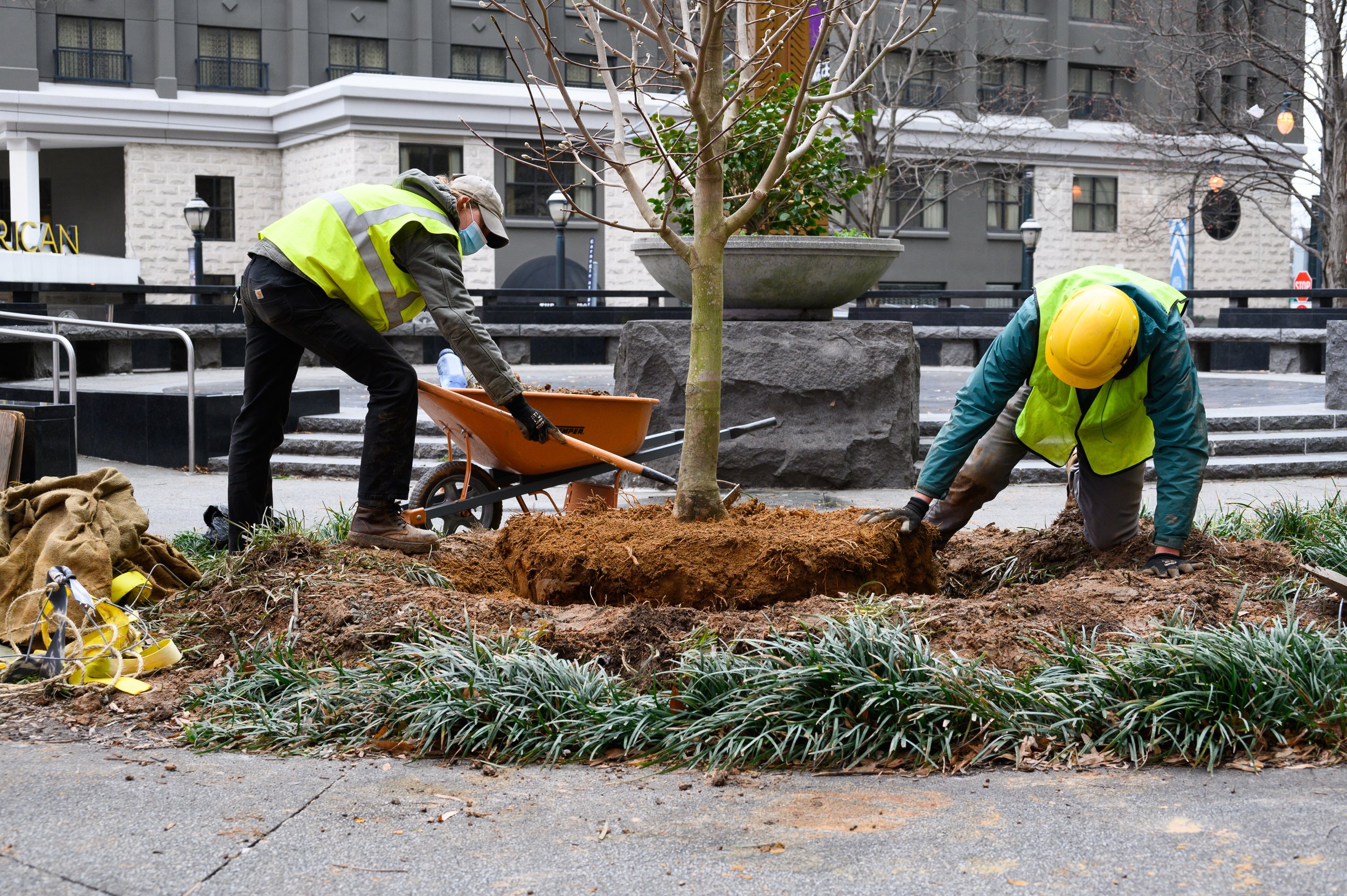

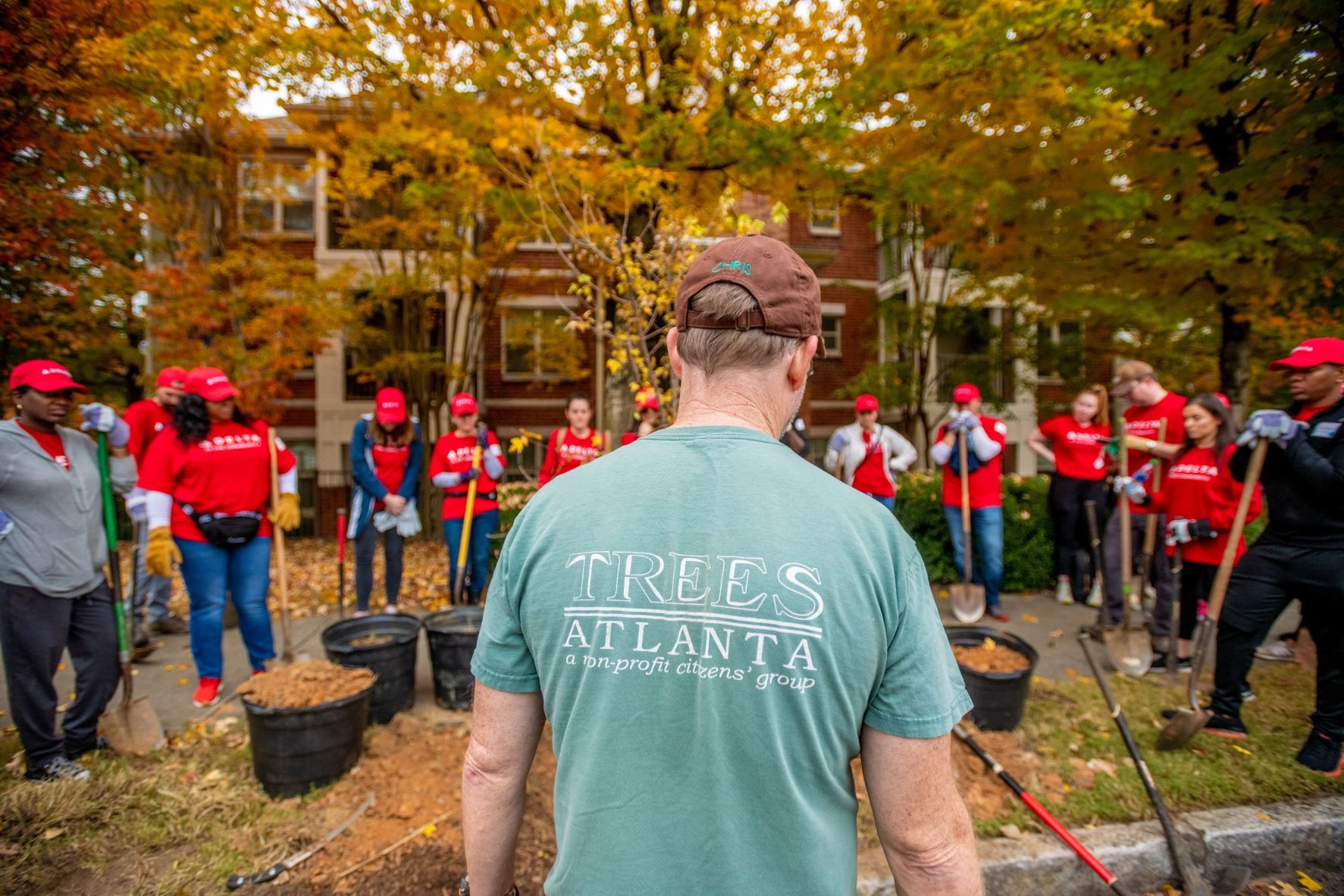

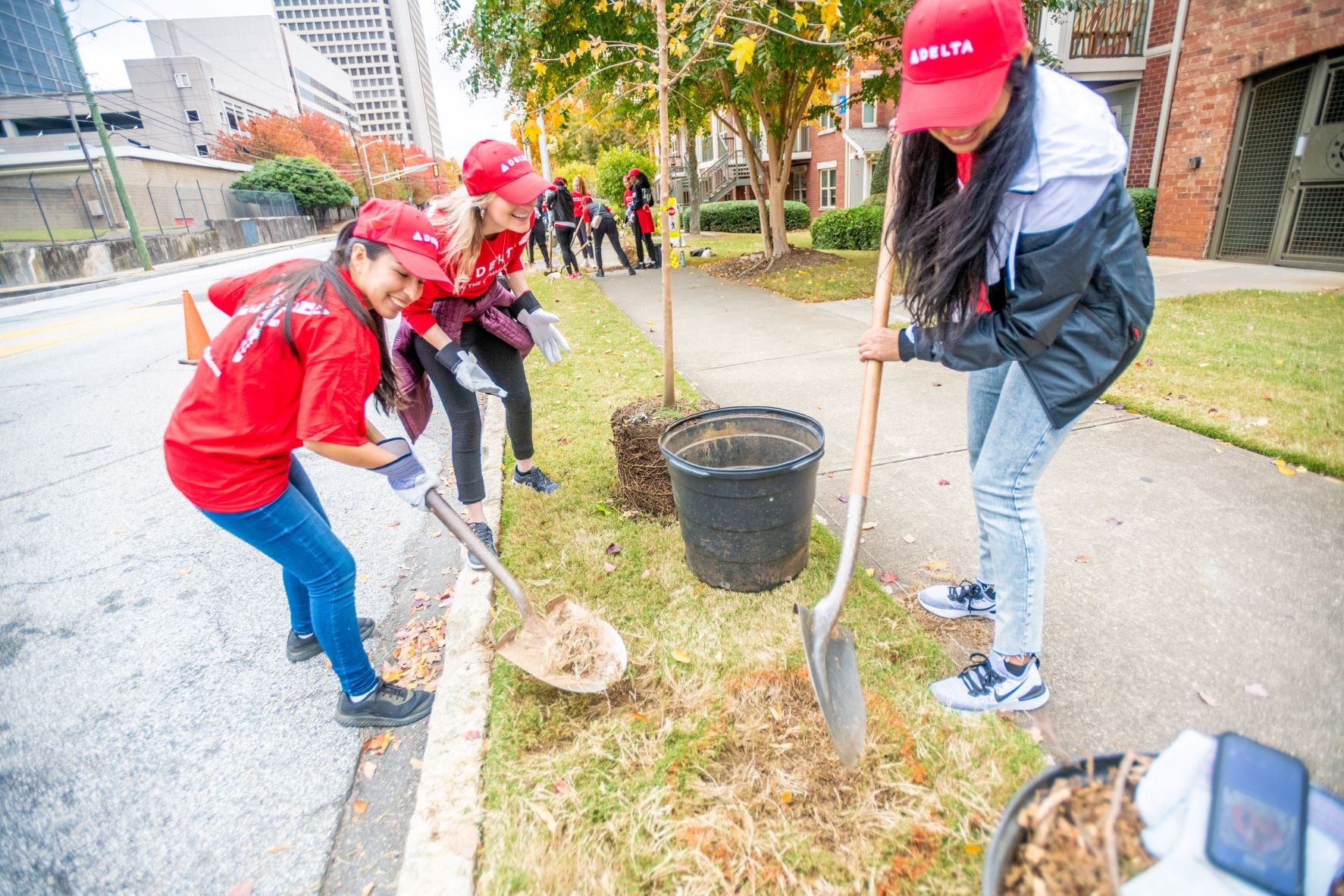
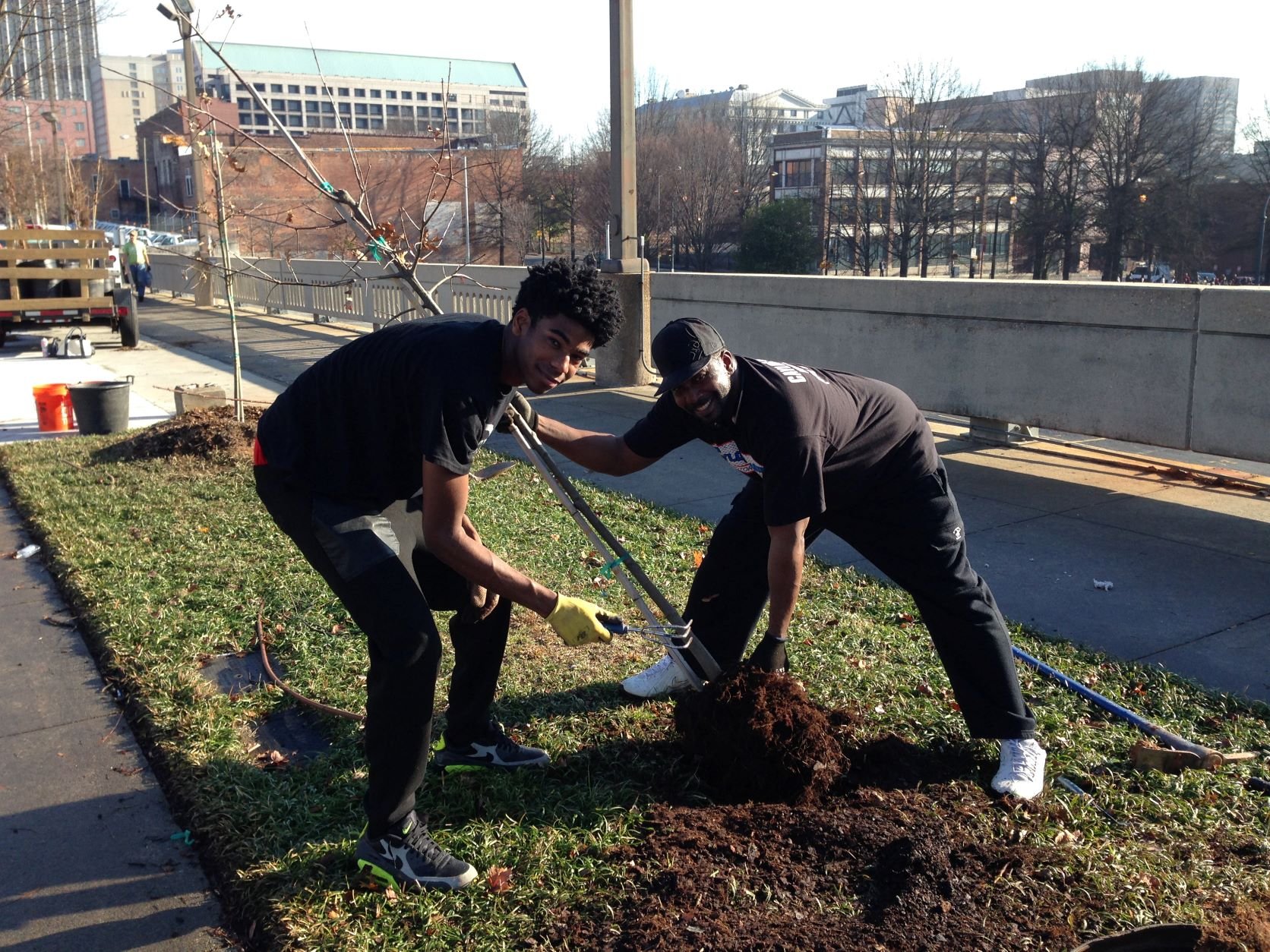
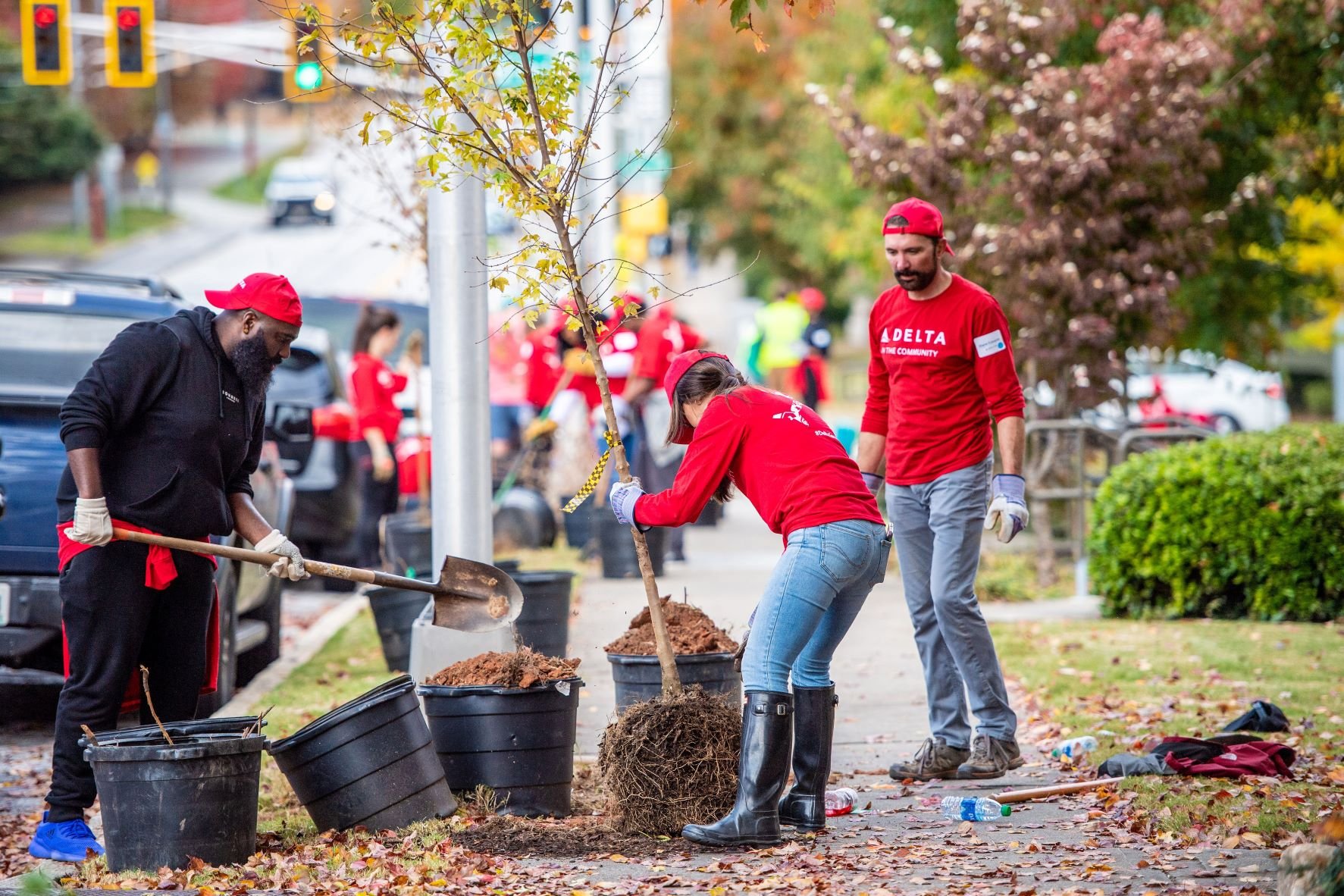
Downtown Atlanta Urban Tree Planting Plan
The mission of the Downtown Atlanta Urban Tree Planting Plan (DAUTPP) centers on increasing tree canopy cover in Downtown Atlanta, subsequently improving air and water quality, creating shade and enhancing the district’s aesthetic.
HGOR led a collaborative effort with an aspirational mission to maintain and grow Atlanta’s name and recognition as the “City in the Forest”. The downtown area of Atlanta has only a 3% tree canopy coverage compared to the overall City tree coverage of 47.9%.
Forest Cover Map illustrates the lack of tree canopy coverage in Downtown Atlanta in the early stages of this project. (2018)
This plan aims to double tree coverage by planting upwards of 8,000 trees phased over ten years. This goal simultaneously reduces the urban heat island effect, mitigates greenhouse gas emissions at the ground level, traps airborne particulate matter, and increases natural carbon sequestration.
The DAUTPP blends research, analysis, and stakeholder guidance to maximize tree canopy coverage via the Downtown streetscape. The project identified planting opportunities such as barren streetscapes, underutilized plazas, and small urban forests situated on underutilized land (e.g., highway buffers and intersections).
The vision for the DAUTPP is to improve the experience, function and character of Atlanta’s tree canopy at a human scale to create a healthy, comfortable, and safe urban environment for both residents and visitors alike while growing and enhancing the environmental function of Atlanta’s tree canopy for future generations. The Downtown Atlanta Urban Tree Planting Plan will be the blueprint for action and implementation for the next decade.
PLANNING AND ANALYSIS PROCESS
Project Study Area
The design team established a phased planting framework. Imperative to the project’s success was an understanding of its ultimate benchmark. CAP/ADID and Trees Atlanta provided plans adopted by the City, regional studies and private efforts relevant to the opportunity at hand. The alignment process began with a comprehensive review of these previous and ongoing efforts.
Data sets were essential for two reasons: 1) They created a comprehensive framework for reinventing perception of the urban experience through environmental stewardship; and 2) they contained unified themes, potential improvements and recommendations important to this Planting Plan.
PLANTING TYPOLOGY
Each tree shown on the master plan has an associated typology medallion based on information discovered in the analysis of existing conditions. Within each typology symbol are three identifiers. Clear zone refers to width of area that stretches from back of the curb to edge of ROW. Minimum preferred soil volume defines a recommendation on root zone size allowed based on the clear zone width and known surrounding utilities. The typology code signifies each location’s most appropriate root zone typology. It was recommended that construction documents be utilized to uphold standards for each varying typology condition. This blueprint demonstrates a typical downtown tree planting.
TREE SELECTION
The recommended list of species and cultivars was determined by many years of tree planting experience in the metro Atlanta region and reported successes and failures observed by Trees Atlanta. At the top of the list are many native oaks, bald cypress and elms. Evergreens such as hollies also perform well in urban areas, although their canopies can be somewhat limited in size. While native trees are best adaptable to climate, many non-native trees have proven over decades of growth to be extremely resilient. Non-native trees must demonstrate no invasive tendencies to be considered for approval.
THE IMPACT OF THIS PLAN
BENEFITS OF URBAN TREES
Strategically increasing tree canopy over time will provide many benefits for both the residents and visitors of Atlanta and the environment. Among these are improving physical and mental heath through healthier air quality, creating shade and reducing the urban heat island effect, enhancing the district’s aesthetic - ultimately improving user experiences - and capturing stormwater runoff that causes flooding in non-porous environments.
| Location | Atlanta, Georgia |
| Year Completed | In Progress |
| Size | 1 square mile |
| Design Team | Steve Sanchez |
Awards
Honor Award, Georgia Chapter of American Society of Landscape Architects, 2023
SIMILAR PROJECTS











